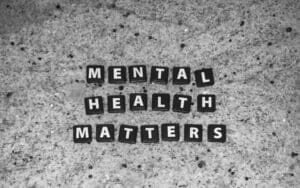Original Article: https://inthesetimes.com/article/social-safety-net-economy-welfare
By: JIM PUGH, SEAN KLINE, TERI OLLE AND ELENA CHÁVEZ QUEZADA
APRIL 19, 2022
How much support do people actually receive from the social safety net? That’s the question that a recently released report from the University of Southern California’s Price Center for Social Innovation aimed to answer. The report, titled “Examining the Complex Social Safety Net for Low-Income Working Families,” explored what social programs are available to Los Angeles residents and how the support they receive from those programs varies as their wages increase.
One key finding from the report was promising: If a mother with two children received all the benefits her family was eligible for, she would receive a living wage of $66,982 per year — enough to meet the basic needs of her family, based on the regional cost of living. In other words, the safety net would be operating in the way it should, ensuring those who fall on hard times have the support they need.
However, as the report also makes clear, what the safety net promises and what it delivers are vastly different. While a family may be eligible for comprehensive benefits, what they receive in practice is typically far less. CalWORKs, California’s primary cash welfare program, is received by just 60% of the eligible population, and Section 8 housing vouchers are only available to a small percentage of families who qualify (as low as 17% in parts of the state) due to the limited number of available slots. Without those two programs, the total value of benefits received by a Los Angeles-based mother with two children with no earned income drops from around $70,000 down to $15,900 — less than one quarter of a living wage.
“If you are a glass half full type of person, then you’ll say, ‘Hey, the safety net is particularly supportive for families with young children.’ But that only works if you receive housing, and we know that only 1 in 5 eligible households actually receive the housing,” shared report co-author Gary Painter.
As a result of these gaps, along with a high cost of living, California has the highest poverty rate of any state in the country. And it’s not just California — benefits enrollment rates are often as low or lower in other parts of the country. Just 1 in 4 eligible households has been able to access rental assistance nationally, and, as of 2016, less than a quarter of eligible families received Temporary Assistance for Needy Families (TANF), the national equivalent of CalWORKs.
These figures, along with the Price Center report, highlight an often-overlooked critical flaw in our safety net: Social programs don’t always reach the people for whom they are intended.
If we want to create a social safety net that actually lifts people out of poverty, this dynamic needs to change. The first step requires an understanding of why people aren’t accessing the support they need. This isn’t simply a matter of personal choice, with people choosing not to enroll in benefits programs. Rather, the answer lies in all the ways our system blocks eligible families from gaining access. Here’s a rundown of the most common impediments:
Limited Availability: Some benefits programs have a cap on the number of people they can support due to limited resources. This is the case with Section 8 housing vouchers, which chronically underserve the full eligible population.
Overwhelming Bureaucracy: The benefits enrollment process is often laden down with administrative burden—lengthy applications, long wait times and unreasonably demanding documentation requests are frequently required to access many benefits programs. This “time tax” can make the application process so costly that many eligible families give up trying.
Complicated and Confusing Eligibility Rules: Many existing social programs have lengthy, convoluted rules regarding eligibility. While the ostensible intent of this design is to more precisely direct support to people who are most in need, in practice, it frequently acts as a barrier to access. These rules can confuse and overwhelm those who are eligible, causing fear about making a mistake and leading many to give up on enrolling.
Language and Technology Barriers: Many families most in need of support face limitations in how they can engage with benefits systems, particularly when they require online access. Low-income families may not have easy access to high-speed internet or computers, and many applicants may not use English as their primary language. Benefits enrollment portals aren’t designed with these limitations in mind, which may prevent eligible families from joining programs.
Lack of Accurate Program Information: There often isn’t a single go-to source of information that clearly and easily communicates what programs a family is eligible for. Additionally, many programs do a poor job of culturally-competent outreach that reaches those who are eligible. This is an especially dire problem for highly targeted benefits, since the odds that those eligible will learn about the program from a friend or family member are low.
Stigma: Those eligible for benefits are often stigmatized for using them, judged as incompetent, lazy, and mooching off the system, based on the pervasive and racist myth of the “welfare queen.” This stigma discourages people from accessing needed benefits.
Together, these barriers prevent those who need critical support from accessing it. The impact is particularly felt within the most marginalized communities — where lack of information and limitations around language and technology are particularly pronounced — which further exacerbates racial inequality.
The good news? A growing number of people and organizations inside and outside of government have begun to recognize this problem — and started working on solutions. The nonprofit organization Code for America has applied best practices in human-centered design to overhaul California’s SNAP application, integrate Minnesota’s benefits application process and develop a simplified tax filing portal to allow families with children to easily claim the expanded Child Tax Credit. The state of Michigan worked with design agency Civilla to streamline its benefits application process, reducing its length by 80%.
A nonprofit startup called AssistHub is working on making it fast and easy for Californians to determine which benefits programs they qualify for. And in December 2021, President Biden issued an executive order to redesign government customer service “with a focus on the actual experience of the people whom it is meant to serve.” The order specifically identifies the time tax as an undue burden on people interacting with government services.
These efforts are a good start, but we must go further. While improvements through technology can help reduce some barriers to enrollment, we should apply a more comprehensive lens to designing and implementing benefits. We refer to this approach as Benefits Access and Equity (BAE), and believe it can draw and build on important steps being taken to create the social safety net that Americans need and deserve. Here are just a few ways that BAE can be applied to our benefits systems:
Putting Lived Experience at the Center: People with first-hand experience receiving public benefits should be at the table when designing social policy. This would ensure that program structures don’t ignore on-the-ground challenges faced by applicants, which might be overlooked by the policy analysts, legislative staff and elected officials who typically lead this process.
Supporting Benefits Agencies’ Innovation: We need to rewrite the rules to support innovation within social service agencies that work with program applicants. The rules around these programs typically include structural and fiscal constraints that lead to high risk aversion around potentially allowing any ineligible people to enroll, at the expense of making the process considerably harder for far more eligible applicants. These constraints also create barriers to trying out new administrative approaches that could facilitate access for eligible applicants.
Publicize Benefits Take-Up Rates: We can’t fix what we can’t measure. We need public accountability metrics on whether programs are reaching their eligible populations, especially for those most vulnerable.
Ensuring people can access benefits programs is more urgent now than ever. The expiration in January of advanced monthly payments from the expanded Child Tax Credit caused 3.7 million children to fall into poverty, and a 40-year record inflation rate is driving the cost of basic needs higher by the day. Without the support of public benefits, millions of families won’t be able to pay their bills or put food on the table.
Changing our benefits systems is a complex challenge, but we have an important opportunity right now to develop a shared understanding of the problems and build momentum towards comprehensive solutions for a social safety net that actually provides vital benefits for the people most in need.
Original Article: https://inthesetimes.com/article/social-safety-net-economy-welfare
By: JIM PUGH, SEAN KLINE, TERI OLLE AND ELENA CHÁVEZ QUEZADA
APRIL 19, 2022






















